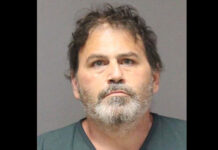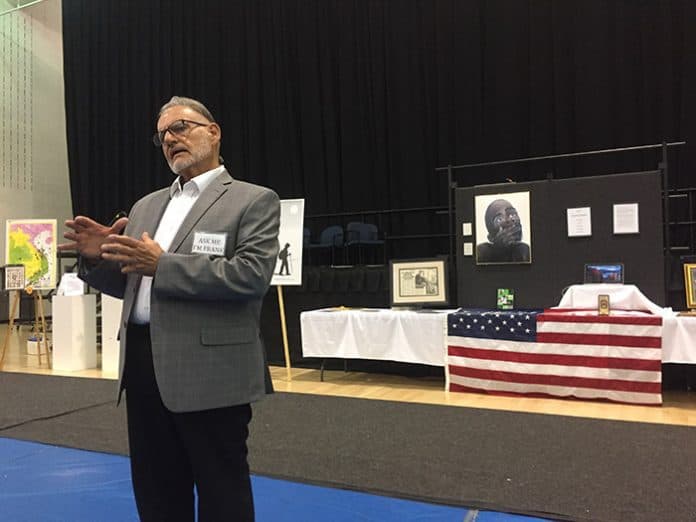
TOMS RIVER – Frank Romeo is one of the many Vietnam veterans that have suffered from Post-Traumatic Stress Disorder (PTSD) over the past 50 years. Having experienced the hardships of war and hatred from the American public post-Vietnam, Romeo struggled greatly to overcome what he had been through at the ripe age of just 18 years old.
Since returning to the States after his time overseas, Romeo went through bouts of addiction and suffered greatly from what was then an undiagnosed disease, what we now recognize as PTSD.
Romeo later found art as a medium to express what his mind was going through. Now, at 70 years old and a father of 7, he is a spokesperson for the reality of war and PTSD, teaching the younger generation about what it is really like over there before they step into the unknown.
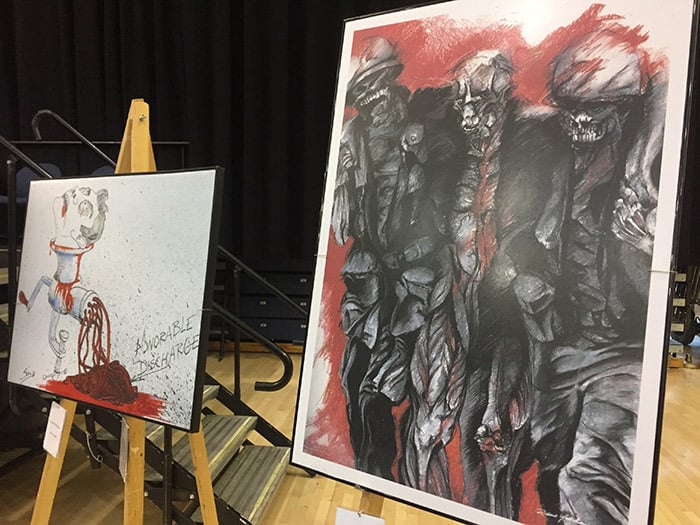
Romeo’s goal is to educate “before the fact” and to prepare those heading into battle, to help cure PTSD before it starts.
At the RWJBarnabas Health Arena at Toms River North High School, Romeo presented his exhibit, “The Art of War,” to illustrate for the public what war does to the mind, and speak to students about his experiences.
“I arrived in southeast Asia just in time for the Tet Offensive…the bloodiest fighting of the war,” said Romeo.
In August of 1969, he was part of a small Special Forces group performing search and destroy missions, living in the jungles of Vietnam on the Vietnam-Cambodia border, when he was ambushed.
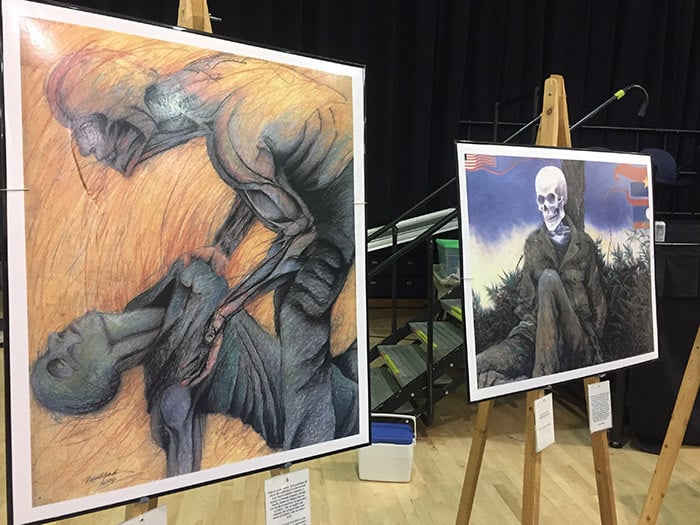
“I was separated from my unit, I was taken by the Viet Cong…I was used for target practice, they shot me seven times,” he said. Romeo noted that he still has one of the bullets lodged in his spine.
Believing he was dead, Romeo’s unit carried him out of the jungle. Once they realized he was alive, they sent him to a hospital in Japan, where he woke up a month later.
Following this, Romeo spent a year in military hospitals undergoing surgeries and being pumped with life-saving drugs, which eventually led him into addiction.
“By the time I left the military, I was totally addicted to drugs,” he said. “I was exhibiting behavior that we associate with PTSD today,” such as anger, and excessive drinking and drug use.
At this time, PTSD was undiagnosed. It was referred to as Vietnam War Syndrome, according to Romeo.
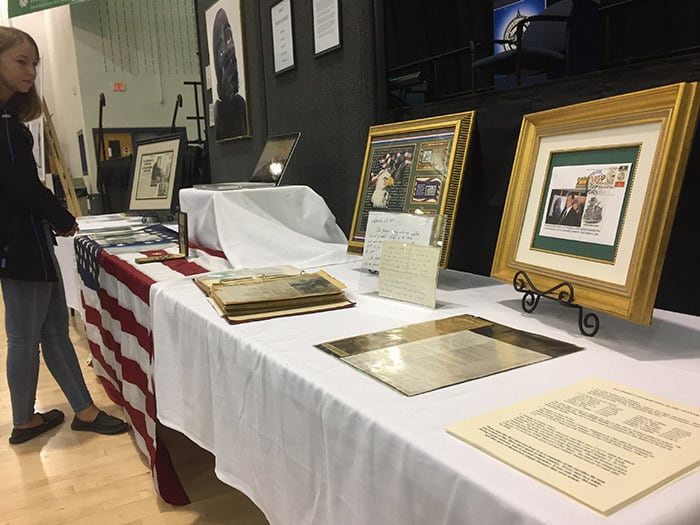
With six months left on his duty contract, he was sent to West Point Military Academy, where he was discharged for drug use at the age of 20 years old.
“The day I left the hospital there was an anti-war demonstration…they [the demonstrators] spit on me,” he said. “I was totally not prepared for being treated this way, especially in the condition that I was in.”
Following his discharge from West Point, Romeo was then sent to Fort Dix for his “non-military” behavior where he lived in a cell.
“What had happened to me in a short period of time [about 2 years] was total trauma,” said Romeo. “I tried to assimilate back into society [unsuccessfully].”
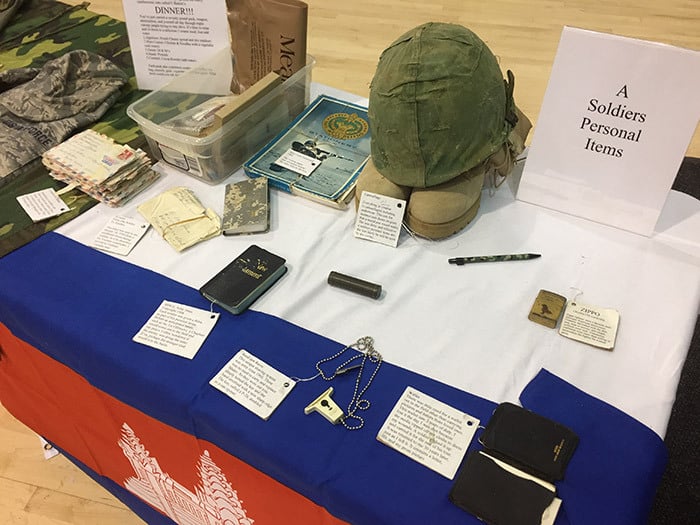
He spent the next 50 years battling an internal struggle with PTSD, the beginning of which was tied to his drug addiction. He later discovered that he was also contaminated with Agent Orange.
“The behavior that I was going through was not rational. My military life followed me through my non-military life,” he said.
But, in the 90s, he found a catharsis in art. Romeo has created various works of art that are a tangible outlet of his trauma throughout the years. One of his pieces is even on display in the National Veterans Art Museum in Chicago as part of a collection that has been declared a National Treasure. A copy of this painting was hung up during his exhibit as well.
“I never took an art class in my life,” he joked.
He began as a “closet artist,” hiding his work away due to the public hatred for Vietnam veterans; he was embarrassed. Romeo describes his work and the artwork of other PTSD soldiers as demonstrating “the emotional history of the country.”
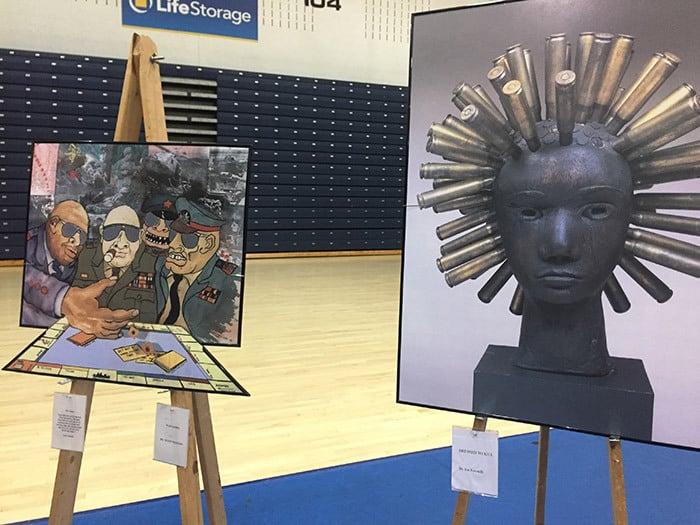
Hanging next to his painting was a plaque that read: “Art is communication…I paint, lecture and get involved not fully understanding ‘WHY.’ I am compelled however to let future generations know, we were here, we did exist and we gave of ourselves simply because we were asked.”
The exhibit included dozens of other works of art, many from other soldiers who have experienced PTSD and expressed their trauma through their art.
“They can’t seem to get past what happened to them in the military,” said Romeo.
Now, Romeo is a success story. Having conquered his PTSD, he is able to speak about it. He is now determined to educate the younger generations of what they might see during wartime, hoping to solve the prevalence of PTSD in soldiers through preparation.
“I believe in education before the fact… I think we need to start a conversation about the realities of our country,” he said.
Romeo stated that since the Civil War, our wars have been “an away game” fought on someone else’s land. He believes we need to start preparing our children before sending them off to a foreign land “psychologically unprepared.”
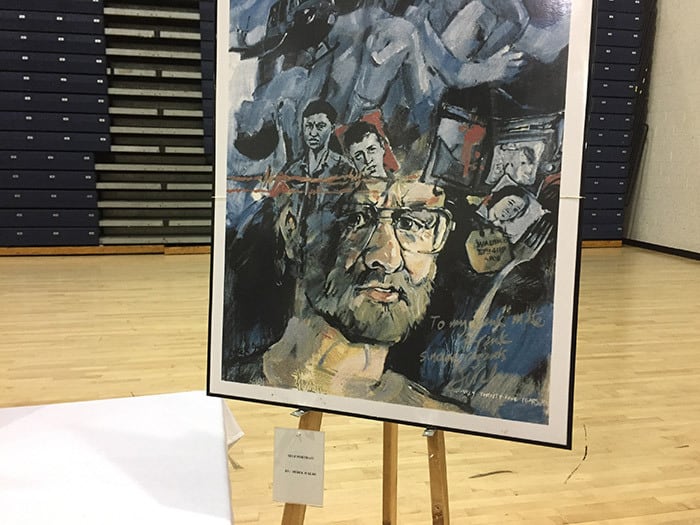
His work now involves speaking to different schools and different groups about what his experiences were and about the prevalence and severity of PTSD.
While noting that services for veterans after the fact are still very important, Romeo said “we need to think about our future veterans.”
Rather than only spending money on programs to help veterans gain comfort and normalcy after a traumatizing war experience, Romeo wants to present kids with the option to mentally prepare themselves beforehand.
Part of Romeo’s current work is also promoting Walk with Frank, a planned walk across New York to increase awareness for PTSD and the plight of our many disabled, homeless or unemployed veterans. He plans to raise funds to support a documentary film to spread his message to a national audience, while spending three months living as a homeless veteran.
Part of this project is linked to the State University of New York (SUNY). SUNY students can participate in any leg of the Walk with Frank journey for course credits.
Romeo plans to document his journey in a blog that anyone can follow at walkwithfrank.org.
For the past 50 years, “It’s been a horror show in my head,” said Romeo. Not only he, but also his family has suffered as a result of his PTSD. Romeo’s plan hopes to alleviate this for soldiers and families of soldiers in the future.
For more information on Romeo’s exhibit, or to take a look at his gallery, visit artofwarwithFR.org.




